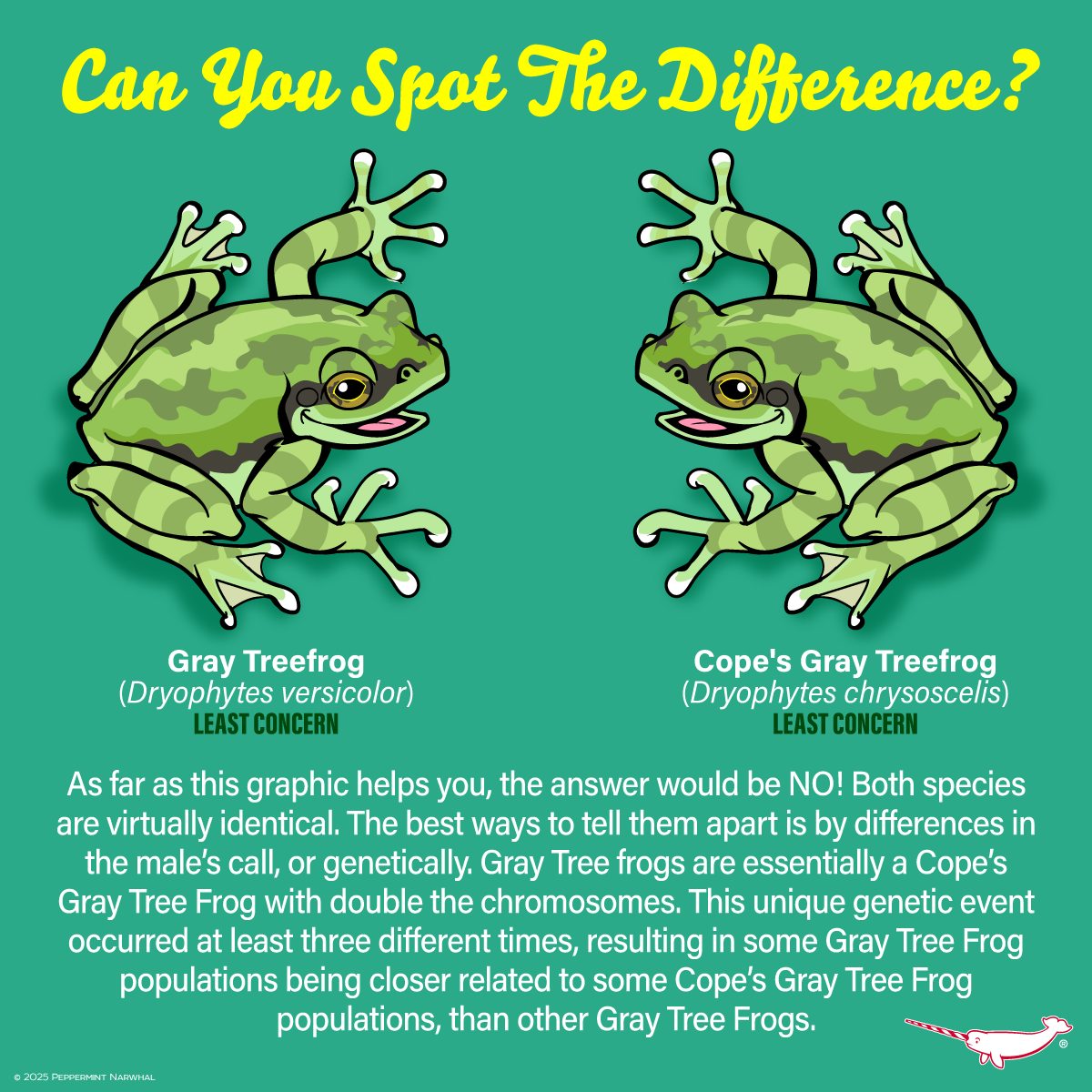- Distinguishing between the gray treefrog (Dryophytes versicolor) and Cope’s gray treefrog (Dryophytes chrysoscelis) involves understanding their physical and genetic similarities.
- Vocalizations serve as the primary method to differentiate between the two species.
- Genetic distinctions, particularly chromosome count, reveal significant evolutionary insights.
- Conservation efforts and environmental implications are critical for maintaining balanced ecosystems.
Understanding the distinctions between the gray treefrog and Cope’s gray treefrog can be challenging due to their nearly identical physical appearances. This mystery captivates zoologists and herpetologists who strive to differentiate between them. Despite their similarities, these species play critical roles in their respective ecosystems and contribute to biodiversity.
A key method of distinguishing between the gray treefrog and Cope’s gray treefrog is through vocalization analysis. Male treefrogs use specific calls as a means of attracting mates, and these vocalizations provide an essential clue in identifying the two species. The call of the gray treefrog is slow and has a musical trill, sounding more like a melodic series, while Cope’s gray treefrog boasts a rapid, shorter trill that resonates at a quicker pace. For those studying these remarkable creatures, listening carefully to their calls during mating seasons offers a pathway to identifying which species is present.
The genetic structure of the gray treefrog and Cope’s gray treefrog provides insight into their evolutionary history. Generally, gray treefrogs are considered to be tetraploids, possessing double the number of chromosomes that Cope’s gray treefrogs have. This genetic variation sheds light on how these species have developed and diverged over time. Fascinatingly, this chromosome doubling happened not once but at least three different times in isolated evolutionary events. Consequently, some gray treefrog populations may share closer genetic ties with certain Cope’s gray treefrog populations than they do with other gray treefrogs. This underlines the complex evolutionary narrative that reflects adaptive strategies in varying habitats.
Conservation efforts for these species are instrumental in maintaining the equilibrium of their ecosystems. Amphibians like the gray treefrog and Cope’s gray treefrog are critical indicators of environmental health due to their permeable skin, making them highly sensitive to pollutants, diseases, and habitat loss. Efforts to preserve natural habitats and minimize pollution are vital for their continued survival. Initiatives that promote habitat diversity and minimize human-induced threats are needed to support these frog populations. In turn, this provides broader ecological benefits, enhancing ecosystem stability and resilience in the face of environmental challenges.
Incorporating educational programs about gray treefrogs and their environment demonstrates the importance of understanding these species more comprehensively. Increasing public awareness encourages support for conservation actions. Additionally, amateur naturalists and citizen scientists can play a role by participating in wildlife surveys and contributing data that aid in monitoring frog populations.
Successfully distinguishing between the gray treefrog and Cope’s gray treefrog requires a multifaceted approach involving auditory skills, genetic insight, and a commitment to environmental stewardship. Understanding their calls and genetic makeup uncovers the depth of their roles within ecosystems and emphasizes the importance of conservation. By integrating scientific research with public education, we pave the way for protecting these amphibians, ensuring their vital presence continues to enrich biodiversity across North America.
*****
Source Description
Can You Spot the Differences Between the
Gray Treefrog (Dryophytes versicolor) and
the Cope’s Gray Treefrog (Dryophytes chrysoscelis)?
As far as this graphic helps you, the answer would be NO! Both species are virtually identical. The best ways to tell them apart is by differences in the male’s call, or genetically. Gray Tree frogs are essentially a Cope’s Gray Tree Frog with double the chromosomes. This unique genetic event occurred at least three different times, resulting in some Gray Tree Frog populations being closer related to some Cope’s Gray Tree Frog populations, than other Gray Tree Frogs.
FROG & AMPHIBIAN MERCH: https://www.peppermintnarwhal.com/s/search?q=amphibian
ANIMAL HOLIDAY CALENDAR – ONLY $10 – LAST CHANCE!
PIN PALOOZA – Select pins $5, $7, & $9 thru April 20, 2025!
Shop www.peppermintnarwhal.com
International Shoppers visit our store on Etsy:
www.etsy.com/shop/PeppermintNarwhal


